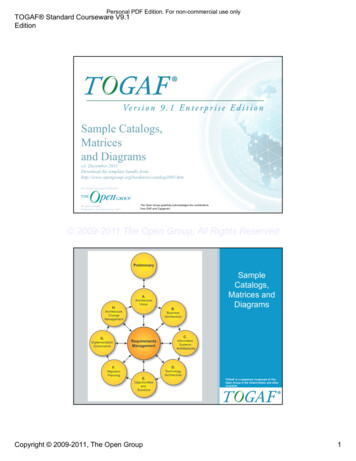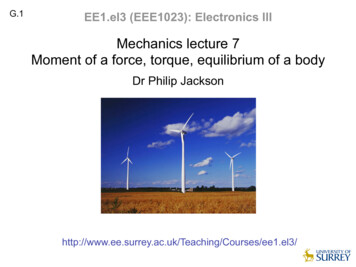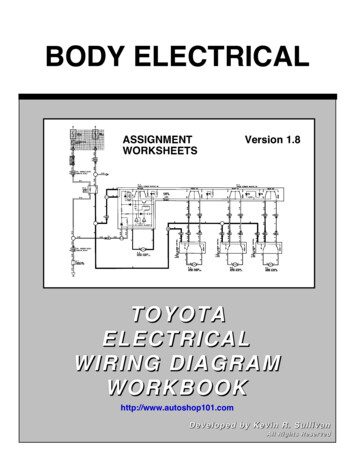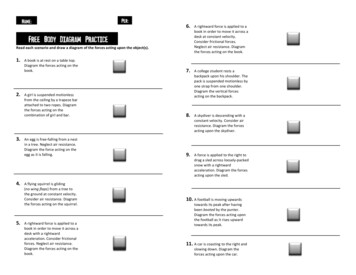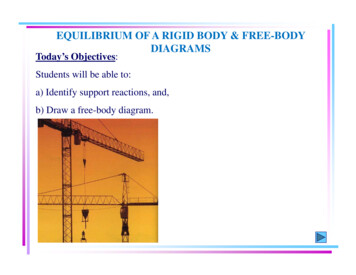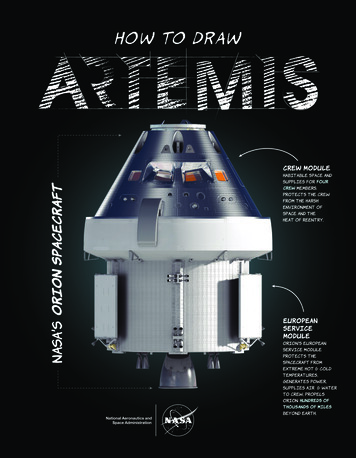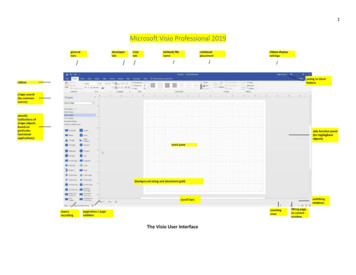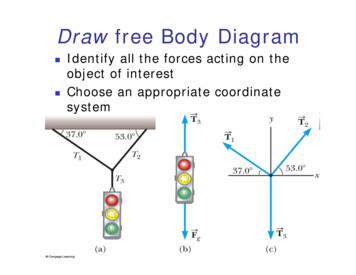
Transcription
Draw free Body Diagram Identify all the forces acting on theobject of interestChoose an appropriate coordinatesystem
Apply Newton’s 2nd lawsum of all theforces actingon the object F ma Remember this is a vector equation! F ma Fy ma yxx
Inclined Planes Choose thecoordinate systemwith x in the sameyor oppositeNxdirection ofTacceleration and yaperpendicular to x.θReplace the forcenisθsgoof gravity with its mθcgθcomponents.mg mT
Example #4-73A van accelerates down a hill (Fig. P4.71), going fromrest to 30.0 m/s in 6.00 s. During the acceleration, atoy (m 0.100 kg) hangs by a string from the van’sceiling. The acceleration is such that the string remainsperpendicular to the ceiling. Determine (a) the angle θand (b) the tension in the string.
Two objects connected by a masslessstring Draw free bodydiagramsApply Newton’sLaws separatelyto each objectThe magnitude ofthe accelerationof both objectswill be the sameThe tension isthe same in eachdiagramSolve thesimultaneousequations
Example #4-38Two objects with masses of 3.00 kgand 5.00 kg are connected by a lightstring that passes over a frictionlesspulley, as in Figure P4.34. Determine(a) the tension in the string, (b) theacceleration of each object, and (c)the distance each object will move inthe first second of motion if bothobjects start from rest.
Newton’s Third Law If object 1 and object 2 interact,the force exerted by object 1 onobject 2 is equal in magnitude butopposite in direction to the forceexerted by object 2 on object 1. F12 F21 Equivalent to saying a single isolatedforce cannot exist
Newton’s Third Law cont’d. F12 may be called theaction force and F21the reaction force Actually, either forcecan be the action orthe reaction forcerˆ1 2The action andreaction forces acton different objectsExample: two planets attract each otherwith gravitational force Gm1m2 F12 r122r
Newton’s Third Law cont’d.ice skaters on afrozen pond:contact forces FAB FBA
Equilibrium An object either at rest or movingwith a constant velocity is said tobe in equilibriumThe net force acting on the objectis zero (since the acceleration iszero) F 0
Equilibrium cont. Easier to work with the equation interms of its components: Fx 0 and Fy 0This could be extended to threedimensions
Example #4.19A 150 N birdfeeder issupported bythree cablesas shownbelow. Findthe tensionin each cable
Draw free body diagrams Apply Newton's Laws separately to each object The magnitude of the acceleration of both objects will be the same The tension is the same in each diagram Solve the simultaneous equations
